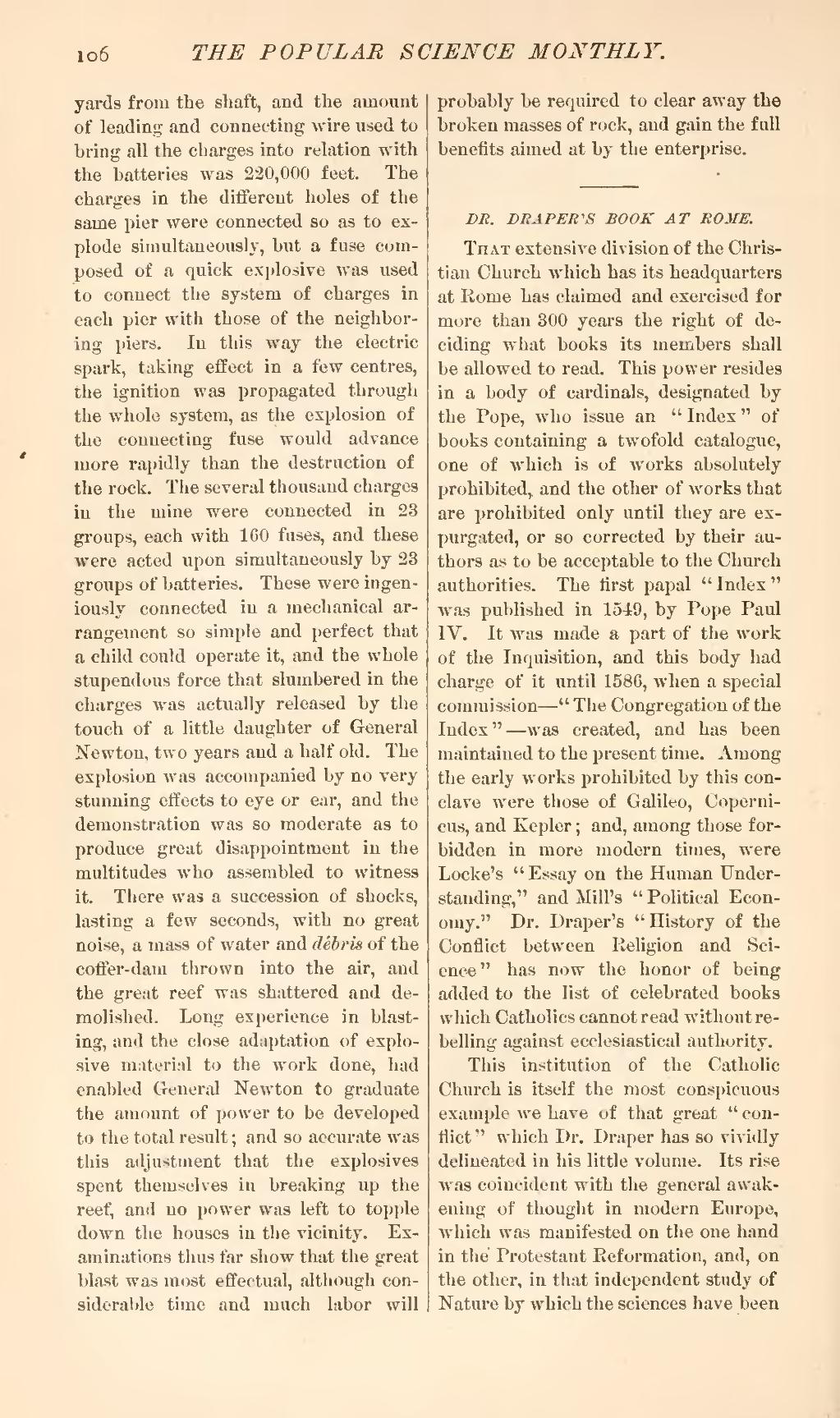yards from the shaft, and the amount of leading and connecting wire used to bring all the charges into relation with the batteries was 220,000 feet. The charges in the different holes of the same pier were connected so as to explode simultaneously, but a fuse composed of a quick explosive was used to connect the system of charges in each pier with those of the neighboring piers. In this way the electric spark, taking effect in a few centres, the ignition was propagated through the whole system, as the explosion of the connecting fuse would advance more rapidly than the destruction of the rock. The several thousand charges in the mine were connected in 23 groups, each with 160 fuses, and these were acted upon simultaneously by 23 groups of batteries. These were ingeniously connected in a mechanical arrangement so simple and perfect that a child could operate it, and the whole stupendous force that slumbered in the charges was actually released by the touch of a little daughter of General Newton, two years and a half old. The explosion was accompanied by no very stunning effects to eye or ear, and the demonstration was so moderate as to produce great disappointment in the multitudes who assembled to witness it. There was a succession of shocks, lasting a few seconds, with no great noise, a mass of water and débris of the coffer-dam thrown into the air, and the great reef was shattered and demolished. Long experience in blasting, and the close adaptation of explosive material to the work done, had enabled General Newton to graduate the amount of power to be developed to the total result; and so accurate was this adjustment that the explosives spent themselves in breaking up the reef, and no power was left to topple down the houses in the vicinity. Examinations thus far show that the great blast was most effectual, although considerable time and much labor will probably be required to clear away the broken masses of rock, and gain the full benefits aimed at by the enterprise.
DR. DRAPER'S BOOK AT ROME.
That extensive division of the Christian Church which has its headquarters at Rome has claimed and exercised for more than 300 years the right of deciding what books its members shall be allowed to read. This power resides in a body of cardinals, designated by the Pope, who issue an "Index" of books containing a twofold catalogue, one of which is of works absolutely prohibited, and the other of works that are prohibited only until they are expurgated, or so corrected by their authors as to be acceptable to the Church authorities. The first papal "Index" was published in 1549, by Pope Paul IV. It was made a part of the work of the Inquisition, and this body had charge of it until 1586, when a special commission—"The Congregation of the Index"—was created, and has been maintained to the present time. Among the early works prohibited by this conclave were those of Galileo, Copernicus, and Kepler; and, among those forbidden in more modern times, were Locke's "Essay on the Human Understanding," and Mill's "Political Economy." Dr. Draper's "History of the Conflict between Religion and Science" has now the honor of being added to the list of celebrated books which Catholics cannot read without rebelling against ecclesiastical authority.
This institution of the Catholic Church is itself the most conspicuous example we have of that great "conflict" which Dr. Draper has so vividly delineated in his little volume. Its rise was coincident with the general awakening of thought in modern Europe, which was manifested on the one hand in the Protestant Reformation, and, on the other, in that independent study of Nature by which the sciences have been
